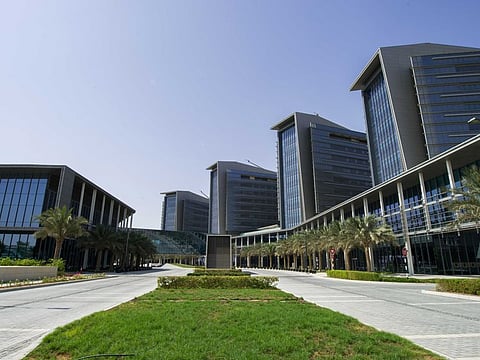Abu Dhabi entity, Mayo Clinic to run 700-bed hospital
Agreement will see Mayo Clinic bringing expertise, advanced medical treatments to UAE

Abu Dhabi
Shaikh Shakhbout Medical City (SSMC) on Sunday signed a joint venture agreement with Mayo Clinic, which will see both entities working together in running the UAE’s largest hospital.
Rated as the number one hospital in the US, Mayo Clinic is expected to bring their expertise and advanced medical treatments to Abu Dhabi, with a large number of the group’s physicians set to take up roles at the hospital.
The SSMC began operations in on November 3 and the 30,000 square-metre public facility in Al Mafraq area has 741 beds for inpatient care across multiple specialities. In addition, the facility caters to more than 2,500 outpatients a day.
“Today, Mayo Clinic – who’s always been a top healthcare organisation focusing on patients with complex or severe conditions – has entered into a joint venture agreement to jointly operate SSMC with SEHA (Abu Dhabi Health Services), and the reason why we came together is we are culturally aligned and are two organisations that believe in putting the needs of the patients first,” said Dr Anton Decker, president, international, Mayo Clinic.
“The goal is to develop this facility over time jointly so that it does eventually become a destination for patients from all over the world,” he added.
Decker said Mayo Clinic’s stake at SSMC would have financial commitments but didn’t disclose the full details.
“We’ve always taken care of patients from the Middle East and Mayo Clinic needs to adapt to the times… Technology has made it possible to take our patient centred approach to healthcare outside of the borders of the US,” Decker said.
For his part, William Stone, vice dean of Practice, said Mayo Clinic’s partnership would bring a new dimension to the UAE’s medical sector, offering areas of treatment that are currently not available.
“To become an international destination for medical care there are pieces that we would be wanting to add, and there’d be technologies and other things we’d be adding along with our expertise and knowledge.
“You think about some things that are missing in the country today; bone barrow transplantation or certain service lines that may be deficient or not enough or other technologies – proton beam therapy, large particle therapy for cancer treatment,” he added.
“There are a whole host of things that are not present in the country now that we would hope to bring here in some point in the future,” he said.
“This is a way in which we’re able to provide our quality level of care to those individuals who otherwise wouldn’t have access [to it], so it is expanding our reach but it’s primarily for the people here in the region,” he added.
Sign up for the Daily Briefing
Get the latest news and updates straight to your inbox



